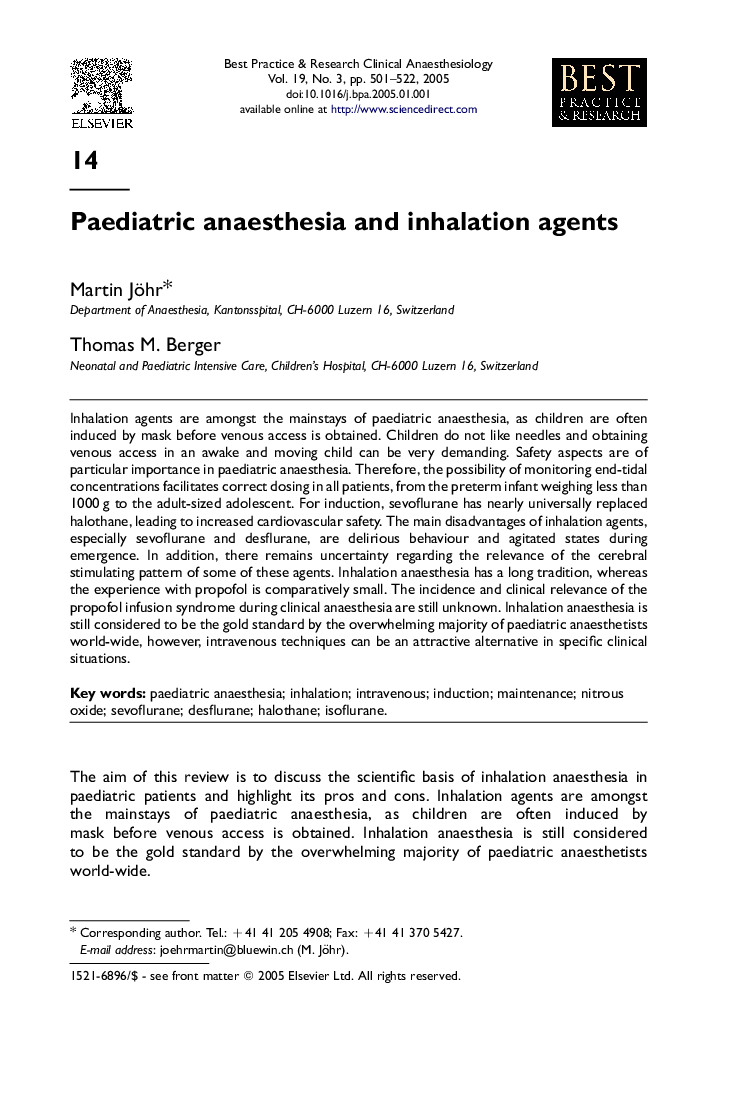| Article ID | Journal | Published Year | Pages | File Type |
|---|---|---|---|---|
| 9092693 | Best Practice & Research Clinical Anaesthesiology | 2005 | 22 Pages |
Abstract
Inhalation agents are amongst the mainstays of paediatric anaesthesia, as children are often induced by mask before venous access is obtained. Children do not like needles and obtaining venous access in an awake and moving child can be very demanding. Safety aspects are of particular importance in paediatric anaesthesia. Therefore, the possibility of monitoring end-tidal concentrations facilitates correct dosing in all patients, from the preterm infant weighing less than 1000Â g to the adult-sized adolescent. For induction, sevoflurane has nearly universally replaced halothane, leading to increased cardiovascular safety. The main disadvantages of inhalation agents, especially sevoflurane and desflurane, are delirious behaviour and agitated states during emergence. In addition, there remains uncertainty regarding the relevance of the cerebral stimulating pattern of some of these agents. Inhalation anaesthesia has a long tradition, whereas the experience with propofol is comparatively small. The incidence and clinical relevance of the propofol infusion syndrome during clinical anaesthesia are still unknown. Inhalation anaesthesia is still considered to be the gold standard by the overwhelming majority of paediatric anaesthetists world-wide, however, intravenous techniques can be an attractive alternative in specific clinical situations.
Keywords
Related Topics
Health Sciences
Medicine and Dentistry
Anesthesiology and Pain Medicine
Authors
Martin Jöhr, Thomas M. Berger,
